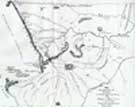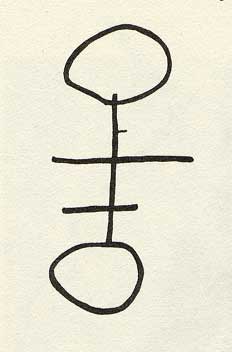|
|
John J. Audubon describes “Mrs. Culbertson" in
his journal entry dated July 14, 1843, during his stay at Fort
Union:
“...the Ladies had their hair loose and flying in the
breeze, and then all mounted on horses with Indian saddles
and trappings. Mrs. Culbertson and her maid rode astride like
men,
and all rode a furious race, under whip the whole way, for
more than one mile on the prairie; and how amazed would have
been
any European lady, or some of our modern belles who boast
their equestrian skill, at seeing the magnificent riding of this
Indian
princess – for that is Mrs. Culbertson’s rank – and
her servant. Mr. Culbertson rode with them, the horses running
as if wild, with these extraordinary Indian riders, Mrs. Culbertson’s
magnificent black hair floating like a banner behind her" (Audubon
1897:88). |
|
|
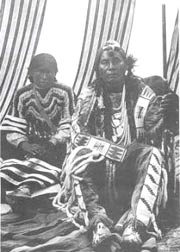
Little Dog, Chief
of Blackfeet, and his wife, 1910.
Photograph by N.A.Forsyth
Courtesy of the Montana Historical Society and Canada Museum of
Civilization.
|
|
|
|
|
| |
| “This common hunting ground... did not belong
exclusively to the Blackfeet, however defined, nor did they overwhelmingly
and convincingly occupy it, possessing it in the sense of controlling
either the sweeping grasslands themselves or access to them. This
had been and would remain something of a war zone — contested,
neutral, and therefore common ground on which the competing and
always moving tribes shifted about...Through their deliberate
actions and diplomacy, the nomadic camps and alliances had
created a territory that was controlled by none but hunted and
used by all at various times in the ebb and flow of tribal movements...
Temporary treaties and awkward truces were forged, after which
carefree hunting, peaceful socializing, and intertrihal trade
reigned. Stevens recognized this fundamental fact of tribal
reality and, together with Cumming, designated and described the
territory for what it was—a common hunting ground founded
upon multiple tribal movement and multiple use" (Farr 2001:140). |
| |
 Portion of the 1865 de Lacy map of the Territory of
Montana.
Portion of the 1865 de Lacy map of the Territory of
Montana.
Courtesy of the Mansfield Library, University
of Montana.
Blue markings on DeLacy’s map indicate active gulch
diggings in 1865. |
|
|
Great Falls > Culture > Making Treaties
|
|
| |
| Fort Laramie Treaty of 1851 |
| |
In preparation for a great council to define intertribal boundaries
between the Missouri River and the Continental Divide, Superintendent
of Indian Affairs David Mitchell, sent word to the trader Alexander
Culbertson at Fort Union to select delegations from the Upper Missouri
tribes. Word arrived too late for Culbertson to obtain delegates
from the Blackfeet or Gros Ventres tribes, so these tribes were
not present at the Fort Laramie Treaty of 1851 However,
their territories were defined by three white men—Mitchell,
Culbertson, and Father Pierre De Smet—each sympathetic
to the Blackfeet. For the Blackfeet nothing really
changed as a result of this first
treaty, and few of them were even aware that a land-defining
treaty had been negotiated.
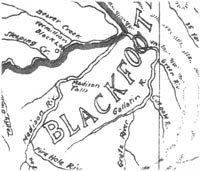 |
View portion
of P.J. DeSmet’s 1851
map to D.D. Mitchell, following
Ft. Laramie treaty gathering.
|
|
| |
| Fort Benton Council of 1853 |
| |
|
In 1853 Congress appropriated $150,000 to explore and survey the west
for a "practicable and economical route" for
a transcontinental railroad. The party appointed to
explore the northern route, from St. Paul to Puget Sound,
was led by
Isaac I. Stevens, newly appointed governor
of Washington Territory. In addition to the responsibilities
of governance and survey, he was given the daunting
task of negotiating peace treaties with tribes along
the route. Some of these tribes, especially the Blackfeet,
had been conducting an unofficial war on Americans since
1806. The major objective of the treaty was to establish
a permanent peace "with all the most numerous and
warlike tribes" of the region, according to George
Manypenny, Commissioner of Indian affairs.
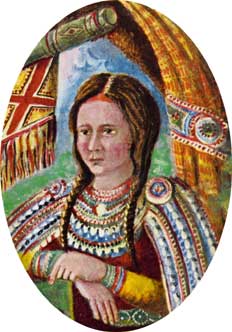 Medicine Snake Woman, Indian wife of Culbertson.
Medicine Snake Woman, Indian wife of Culbertson. (Point:1842)
Natoyist-siksina', or Natawista
Used with permission from Loyola Press
|
Alexander Culbertson, head factor at Fort McKenzie, was designated
as special agent to introduce Stevens to the Blackfeet.
Culbertson married Natawista, Medicine Snake Woman,
daughter of Blood Indian chief Two Suns.
Even
though Culbertson
was in good relation with his in-laws, this task
was a dangerous one because of the long-standing
animosity between Blackfeet tribes and the "Long
Knives." Medicine Snake Woman insisted on
accompanying her husband on this errand, saying,
|
| "My people are a good people
but they are jealous and vindictive. I am afraid
that they and the whites will not understand each
other, but if I go, I may be able to explain things
to them and sooth them if they should be irritated.
I know there is great danger" (Medicine Snake Woman,
in Ewers 1958:209, from Reports of the Commissioner
of Indian Affairs, 1854:196). |
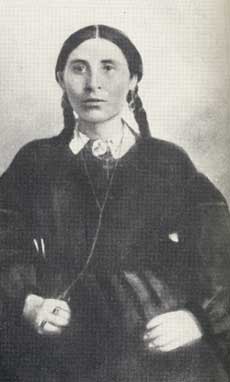 Medicine Snake Woman (Natoyist-siksina')
Medicine Snake Woman (Natoyist-siksina')
Image courtesy of Montana Historical Society. |
Dress and Decorum
Isaac Stevens made these observations on dress and
decorum in September of 1853:
"On the 21st we held our talk with the Blackfeet.
The chiefs and warriors were all richly caparisoned.
Their dresses of softly prepared skins of deer, elk,
or antelope were elegantly ornamented with bead-work.
These are made by their women, and some must have occupied
many months in making. The other articles of their costume
were leggings made of buffalo skins, and moccasins,
also embroidered, and a breech-cloth of blue cloth.
Their arms were the Northwest guns, and bows and arrows.
On all solemn occasions, when I met the Indians on my
route, they were arrayed with the utmost care. My duties
in the field did not allow the same attention on my
part, and the Indians sometimes complained of this,
saying, "We dress up to receive you, and why do
you not wear the dress of a chief" (Stevens: 1901)? |
| |
| Lame Bull Treaty of 1855 |
| |
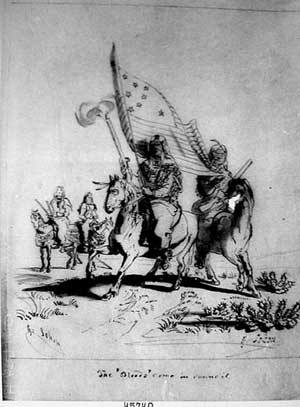
Bloods come in council.
Gustavus Sohon, 1855. Image courtesy of Smithsonian Institution.
The tribes of the Blackfoot Confederacy agreed to
attend the great council of Oct. 17, 1855, across the Missouri from
the mouth of the Judith River, a river named by William Clark after
his cousin. The Blackfeet called it Oo-tah-kwi-si-sa-tan,
or Yellow River.
In addition to the Blackfeet tribes, delegations of Flathead,
Pend d'Oreille, and Nez Perce attended along with a single Cree
chief. This chief, The Broken Arm, came with gifts of tobacco as
a token of friendship for the Blackfeet from the Assiniboine and
Cree tribes. |
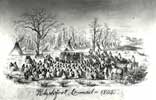
Blackfoot treaty council.
G. Sohon, 1855.
Courtesy of Washington State Historical Society, Tacoma |
| |
|
| The Blackfeet were uneasy that additional members of these tribes
were not present to smoke tobacco with them and to negotiate this
treaty. Furthermore, they felt that negotiations could not be considered
concluded without representation from the traditional enemy of the
Blackfeet, the Crow. The council proceeded despite these limitations.
|
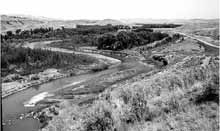 Judith River Treaty site.
Judith River Treaty site.
Image courtesy of D. McDermott. |
The lack of understanding between the parties was demonstrated
from the beginning. In Stevens' opening remarks he told the
Blackfeet of the hope that,
"through the long winters, bye and bye, the Blackfeet
would not be obliged to live on poor Buffalo Meat," adding, "You
know the Buffalo will not continue forever" (Partoll 1937:6).
Instead of buffalo, they would have domestic cattle for food.
Stevens clearly did not understand the relationship between
Blackfeet and buffalo, or their lack of regard for beef.
The negotiations proceeded, and eventually every tribal representative
made his mark to the following agreements, to the extent that
they understood:
"Blackfoot nation agrees that certain
territory assigned them by treaty of Fort Laramie
shall be a common hunting ground. Certain territory
to belong exclusively to the Blackfoot...is described
in the treaty as bounded by a line running eastwardly
from Hell Gate, or Medicine Rock Passes, to the nearest
source of the Muscle Shell river; thence down the
river to the Missouri; down the Missouri to the mouth
of Milk river; thence N. to forty-ninth parallel;
W. to the main range of the Rocky mountains, and
southerly along that range to place of beginning
" (Powell: 1899).
|
|
Portion of 1855 Stevens and
Cummings map,
illustrating Blackfeet territory and the common hunting
ground.
Map courtesy of the Mansfield Library, University of Montana. |
After the signing, gifts of blankets, cotton fabric,
sugar, coffee, rice, flour, and tobacco were distributed.
Many of the Blackfeet had no idea how these products
were to be used. They threw the flour into the air
and poured sugar into the stream to drink its sweet
mixture.
"After the feast they brought out
a lot of things we had never seen before: flour,
molasses, bread, axes, tools, and so on. Our chief
thought the molasses was grease, and when a barrel
was rolled out in front of him, he reached down into
it and brought up two handfuls and rubbed it in his
hair, saying,'Oh, this will make good grease for
the hair.' We thought the flour was snow and that
the bread was the fungus off trees, and we did not
care to trade our robes for these" (Bradley, “Manuscript," Montana
Historical Society, Vol. III, 271-74).
| How well did the Blackfeet understand what they had signed?
Could they, like Stevens, have imagined an end to the buffalo?
Not likely, when the plains were often blackened as far
as the eye could see. Even 20 years later, this extinction
story was hard to imagine in the world centered on the Sweet
Grass Hills. |
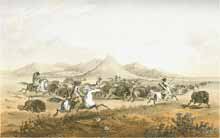 Blackfeet Indians
Blackfeet Indians – Three
Buttes
Lithograph from original by John Mix Stanley,
ca. 1854. (Stevens
1861:115)
Stanley's "Three Buttes" are the Sweetgrass Hills.
Courtesy of The University of Montana
Mike and
Maureen Mansfield Library, Government Documents. |
This treaty is remembered by the Blackfeet as Lame Bull's Treaty,
because he was the first chief to sign.
|
| |
|
1855—When treaty was first paid.
(Raczka: 1979)
For concessions granted at this council, the
United States agreed to spend $20,000 annually
on "useful goods and provisions for the four
tribes of 'the Blackfoot Nation' for a period
of ten years" (Ewers; 1958: 219).
|
|
| |
In the fall of 1855, assuming their leaders understood the specifics
of the treaty, the Blackfeet people believed that their homeland
had been guaranteed them if they would share the Three Forks area
as a common hunting ground with the western tribes and share the
area east of the Milk and north of the Missouri with the Assiniboine.
These hunting agreements would last 99 years. The U.S. government
would provide many things they needed in exchange for safe passage
through Blackfeet country. At that time, nothing else was coveted
within this vast homeland. But this was a short story. In 1862
and 1863 gold was found at several important sites right in the
middle of the common hunting ground and others within the Blackfeet
Reservation. Within 10 years of the treaty, by 1865, there were
no more bison in the shared hunting ground. Mining camps, instead,
dotted the landscape, and miners trespassed throughout Blackfeet
country looking for gold.
|
| |
Background: Bloods
come in council.
Gustavus Sohon, 1855. Image courtesy of Smithsonian Institution. |
|
|
|










